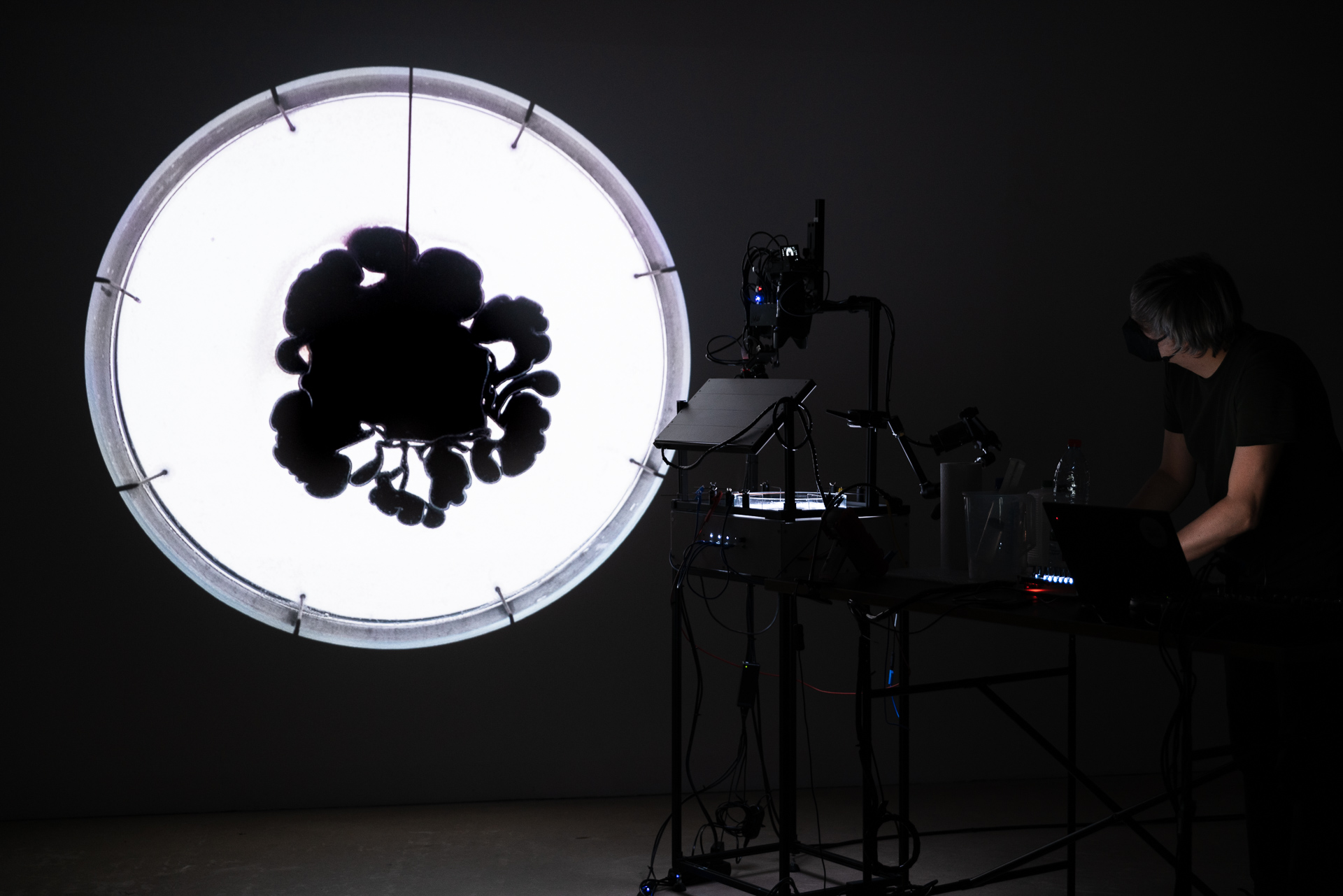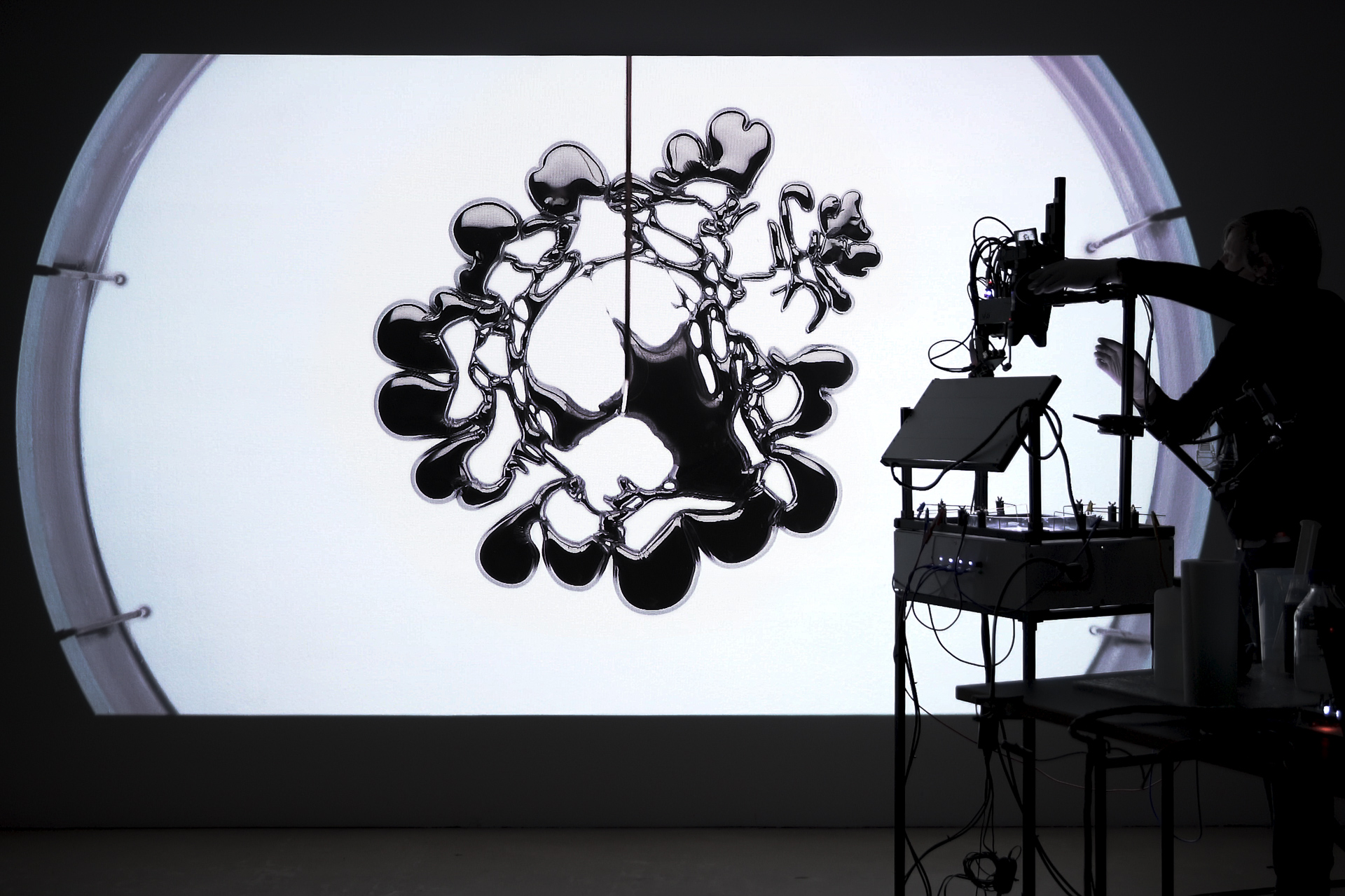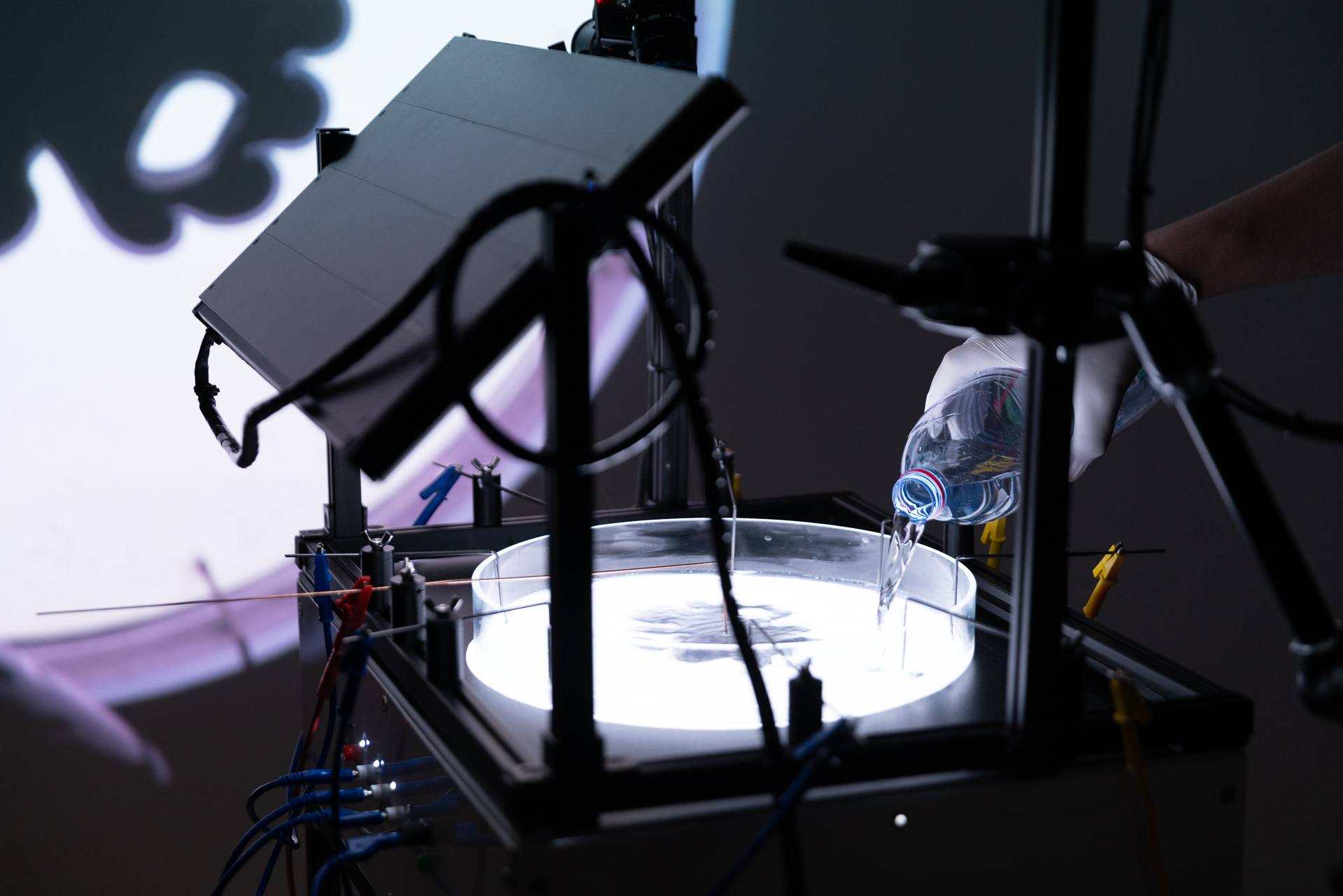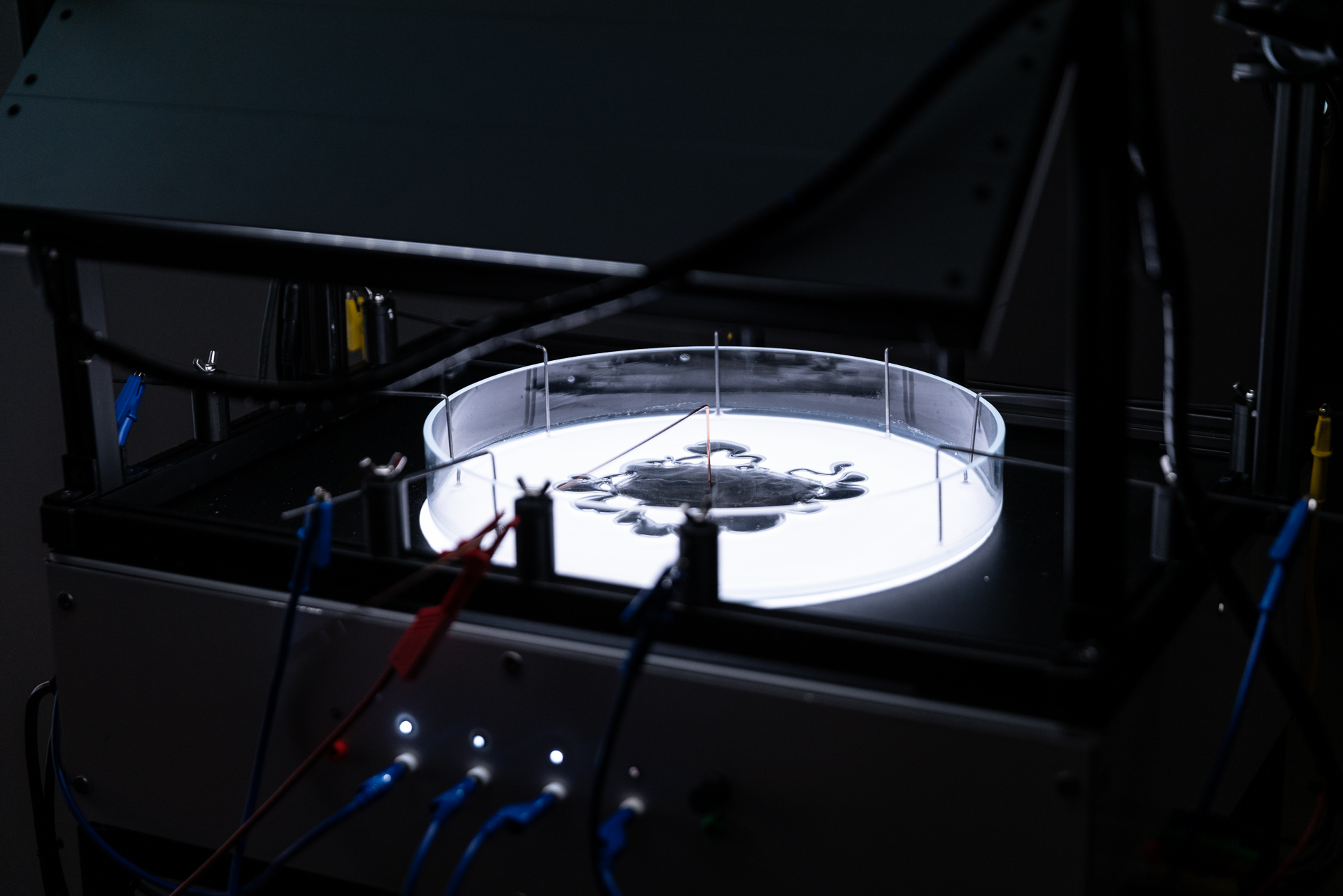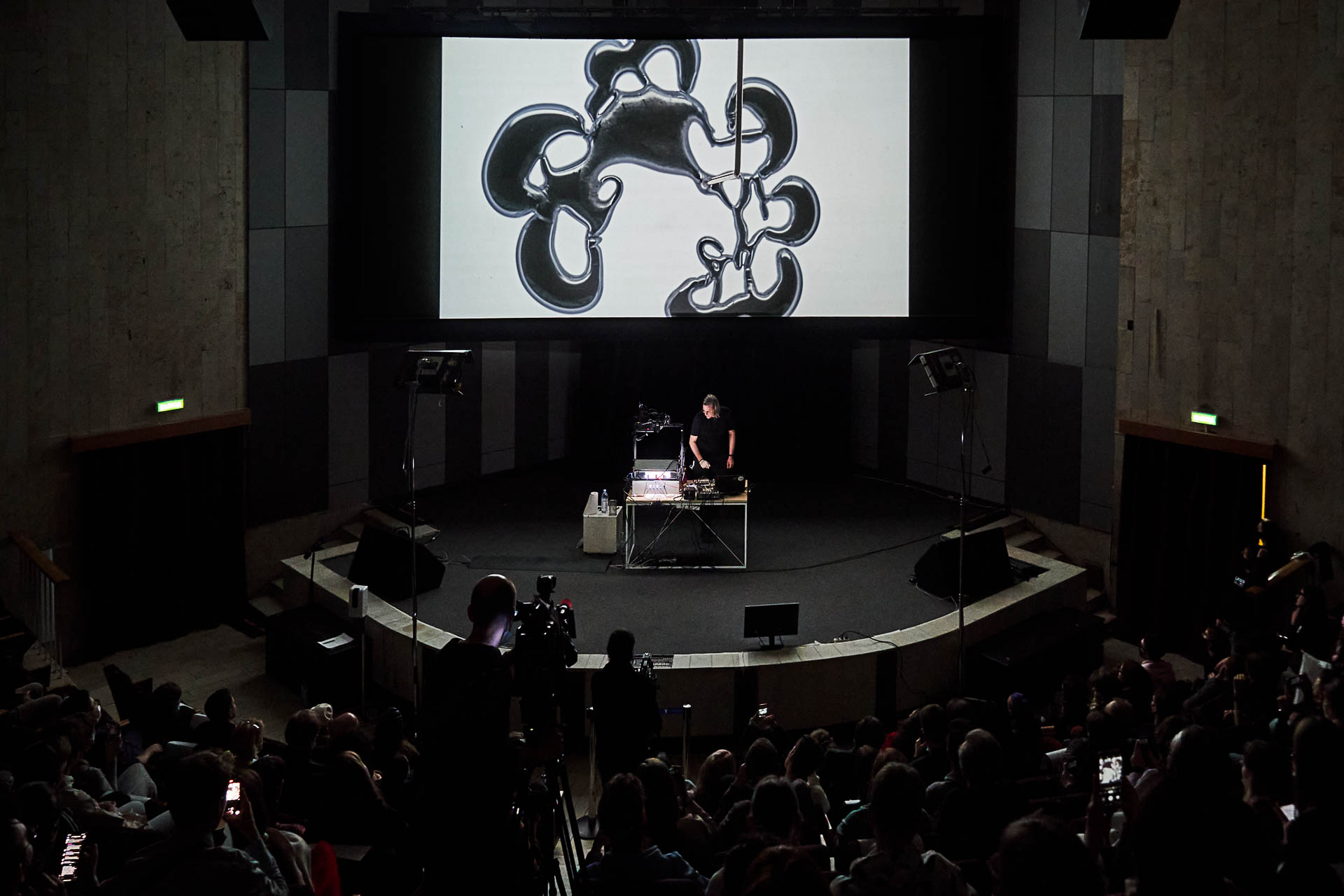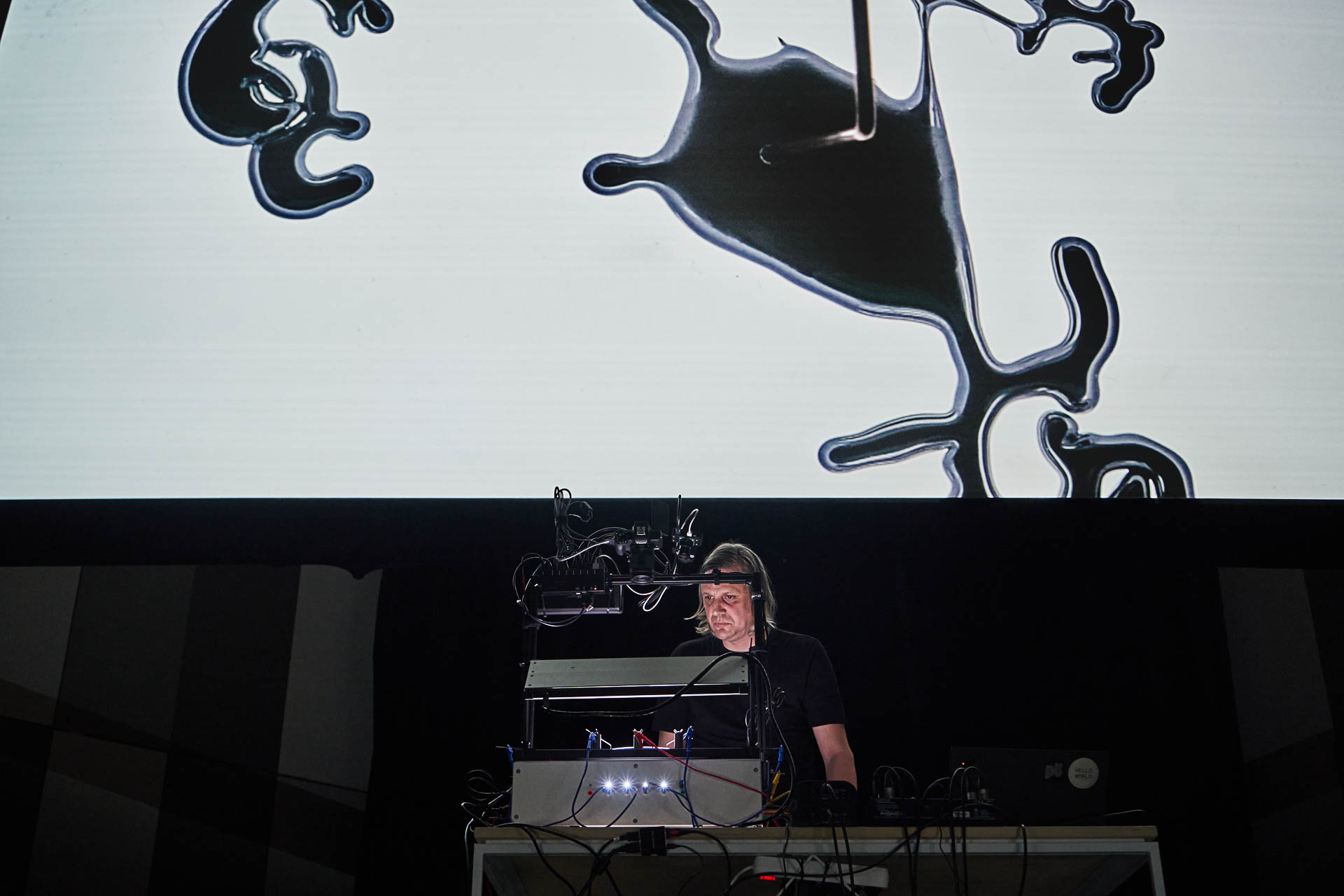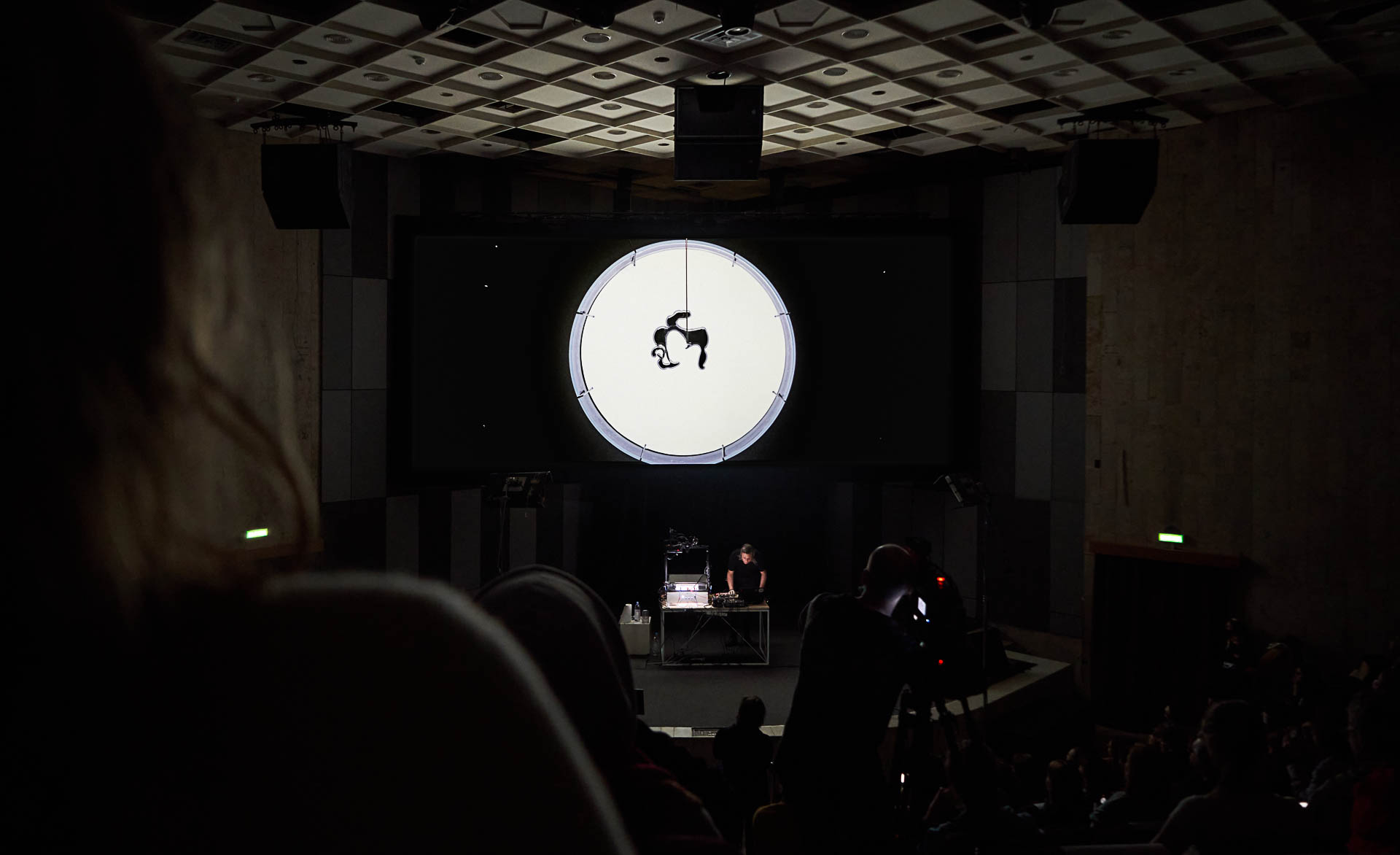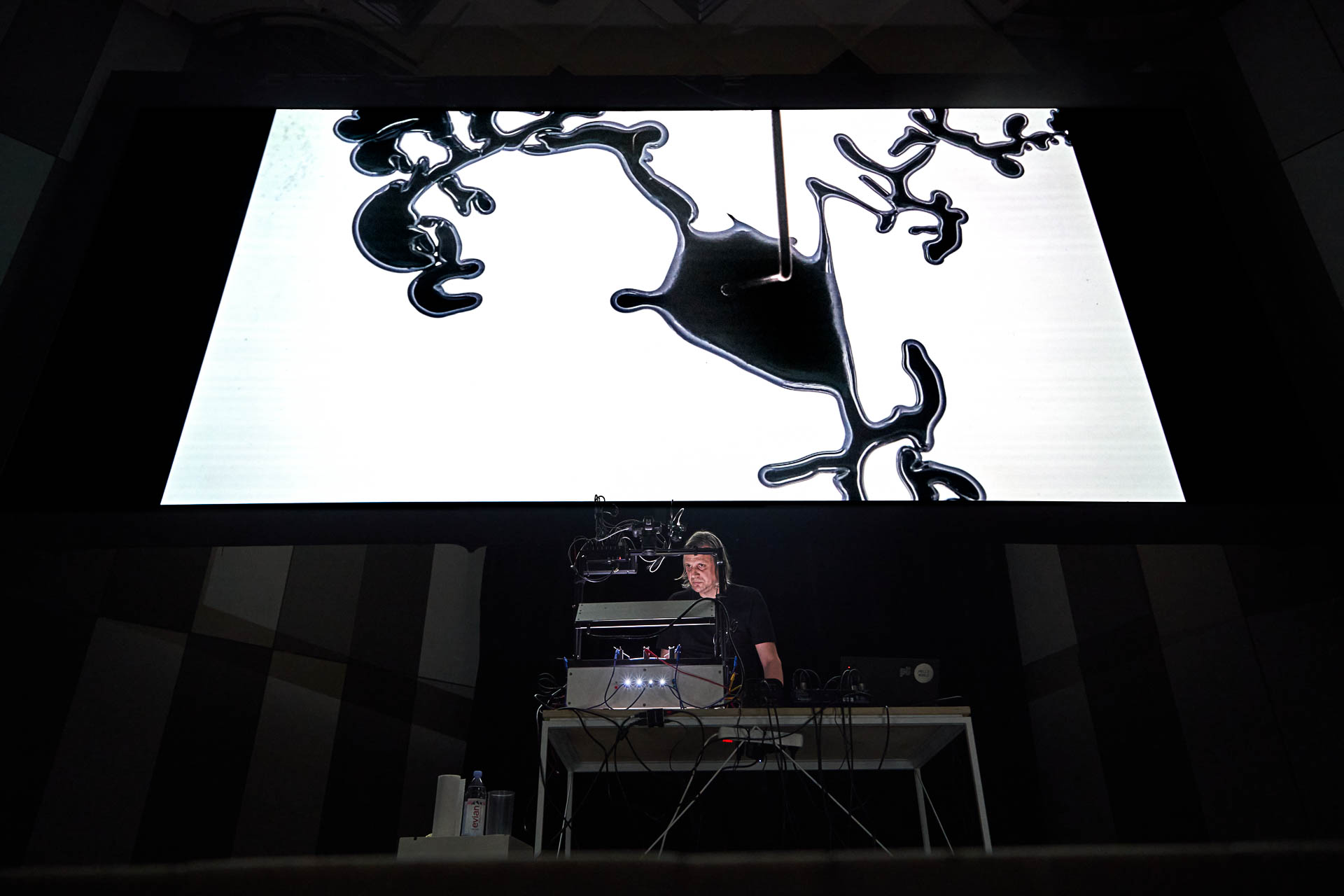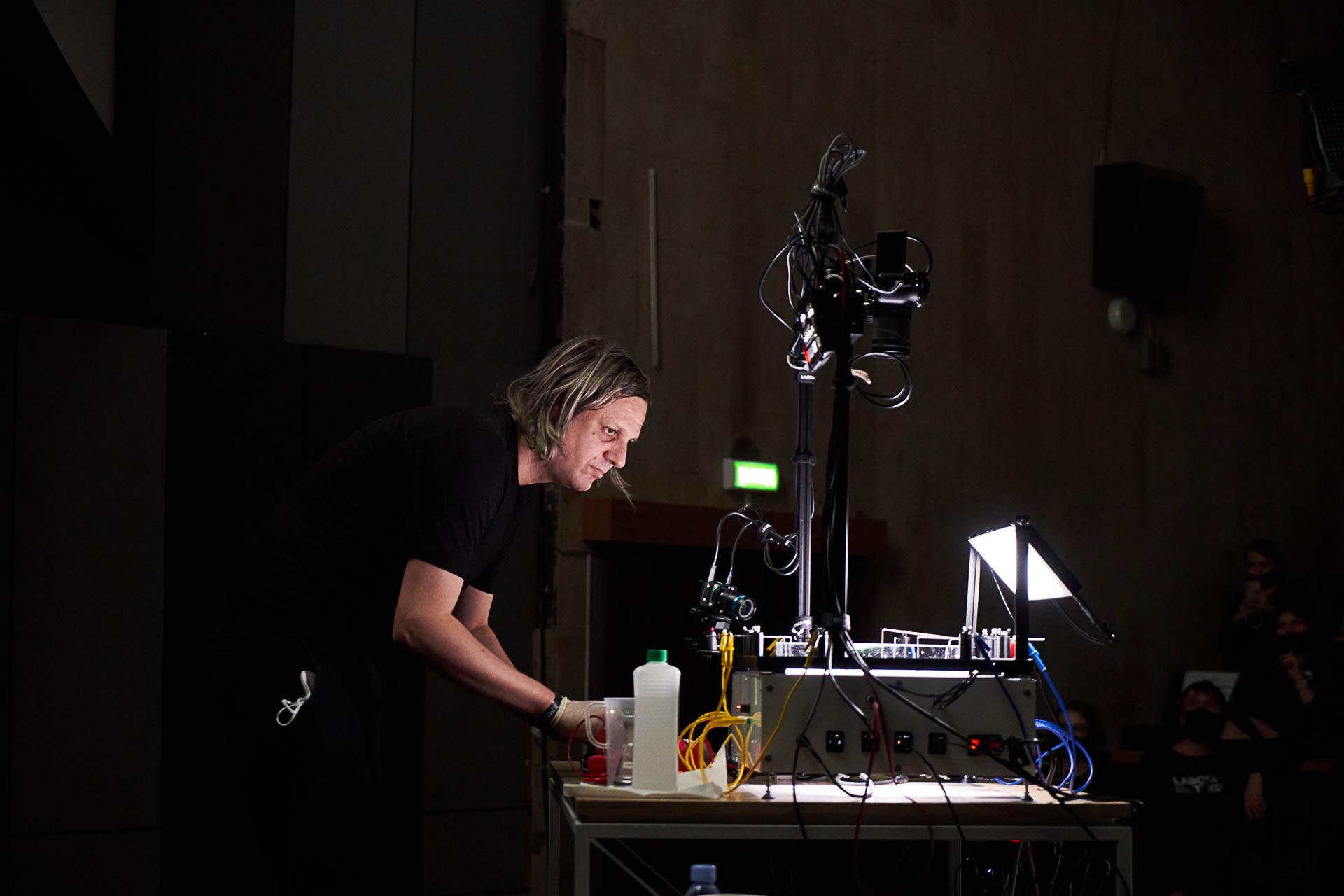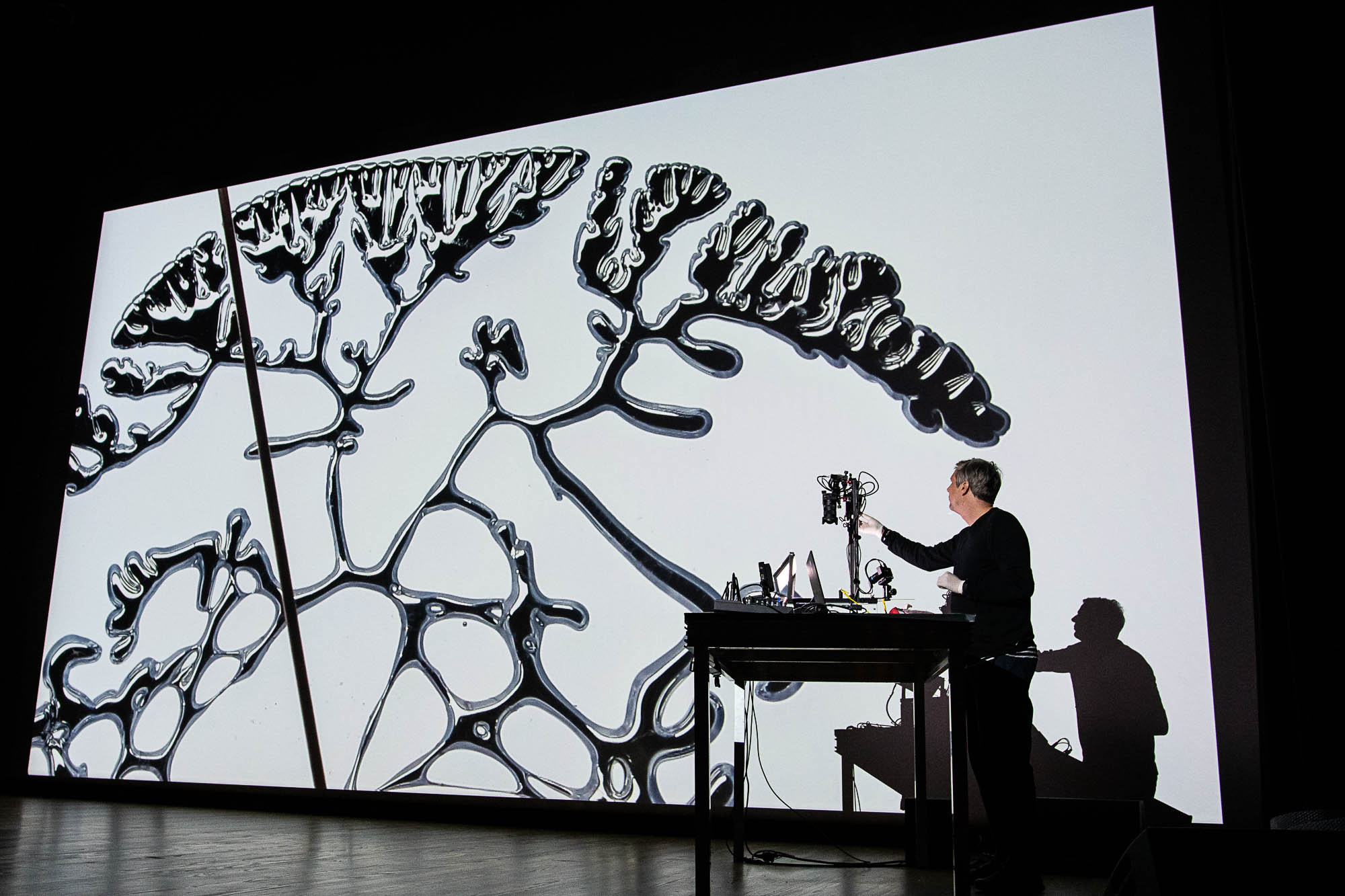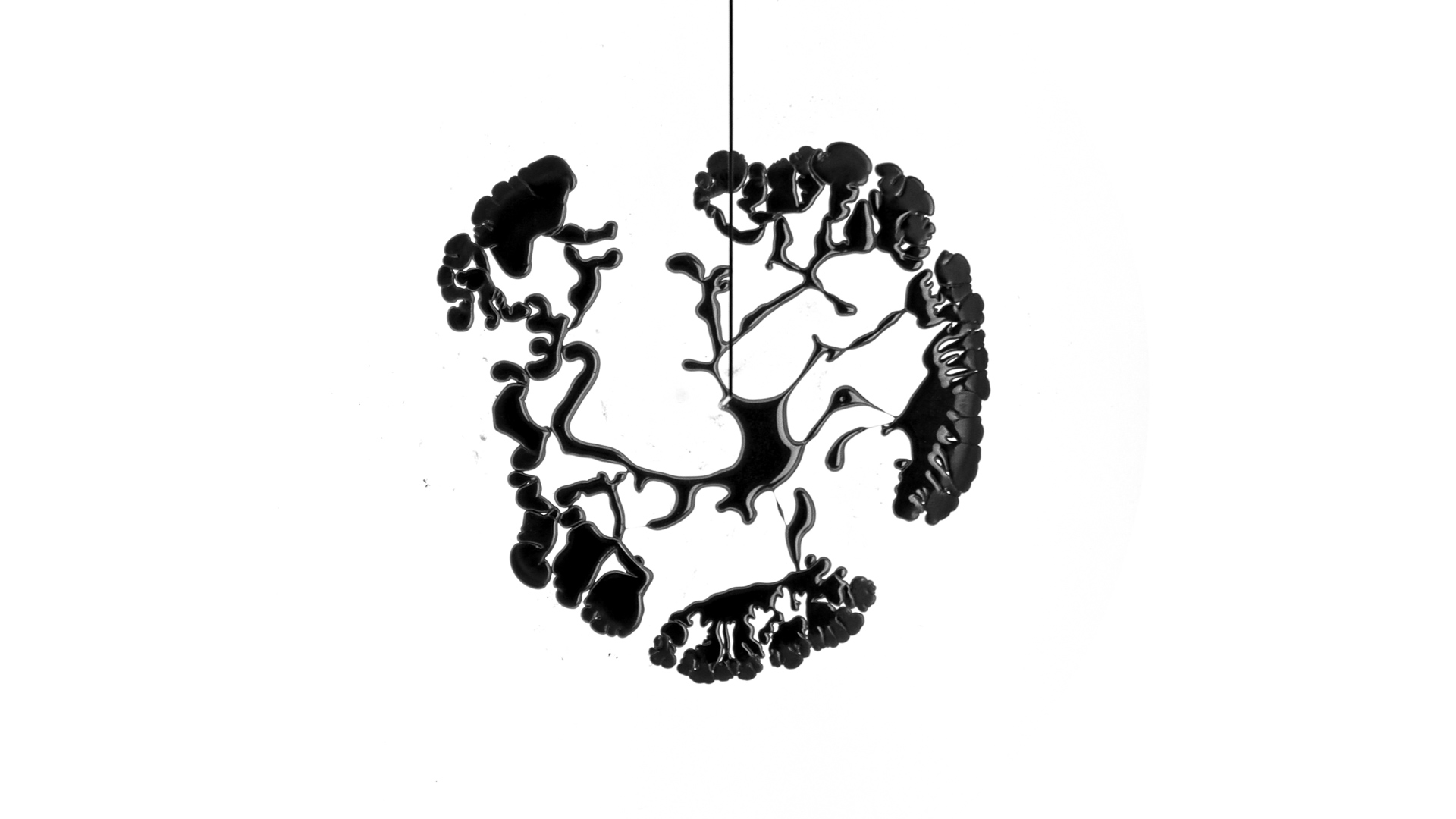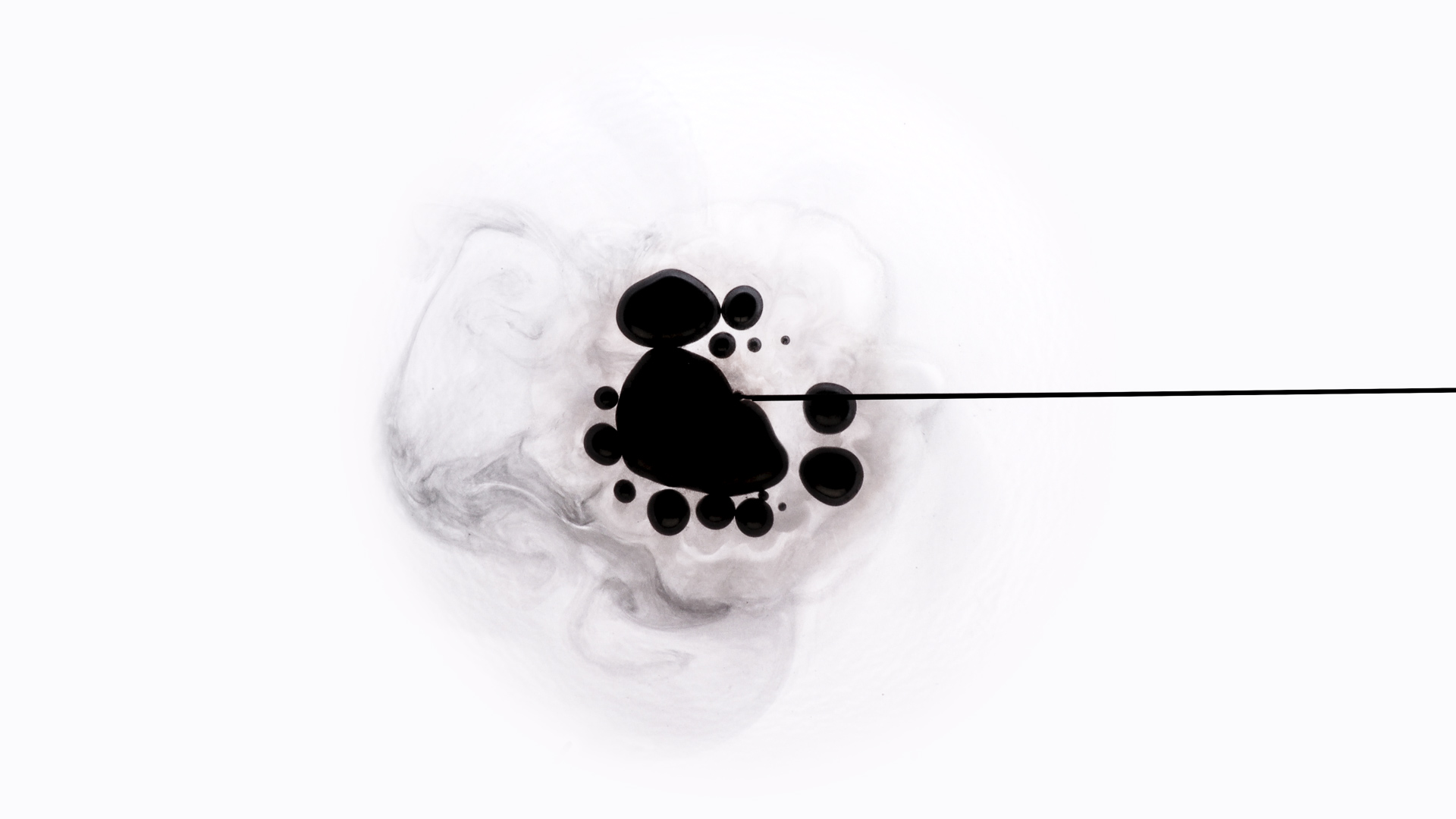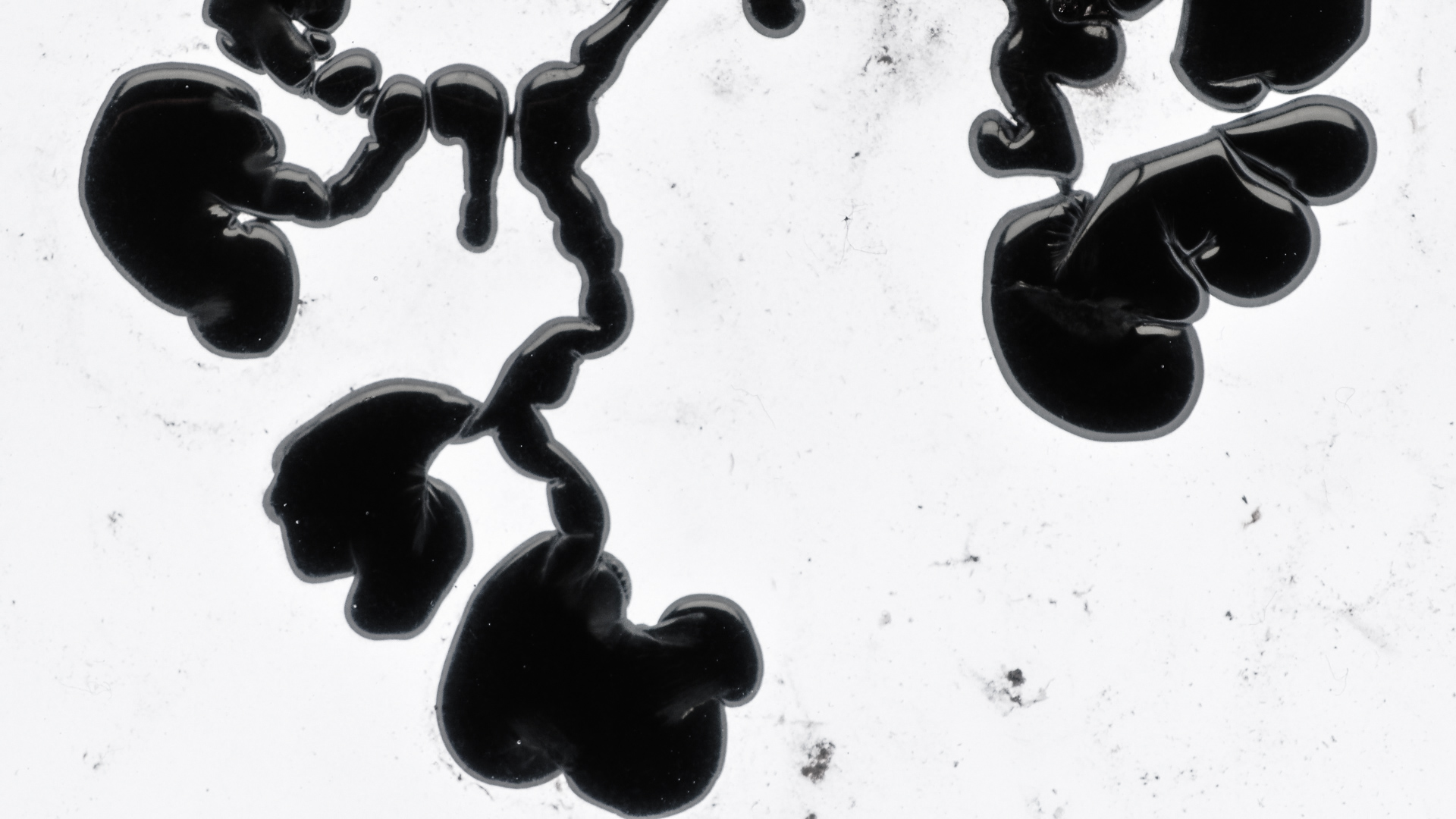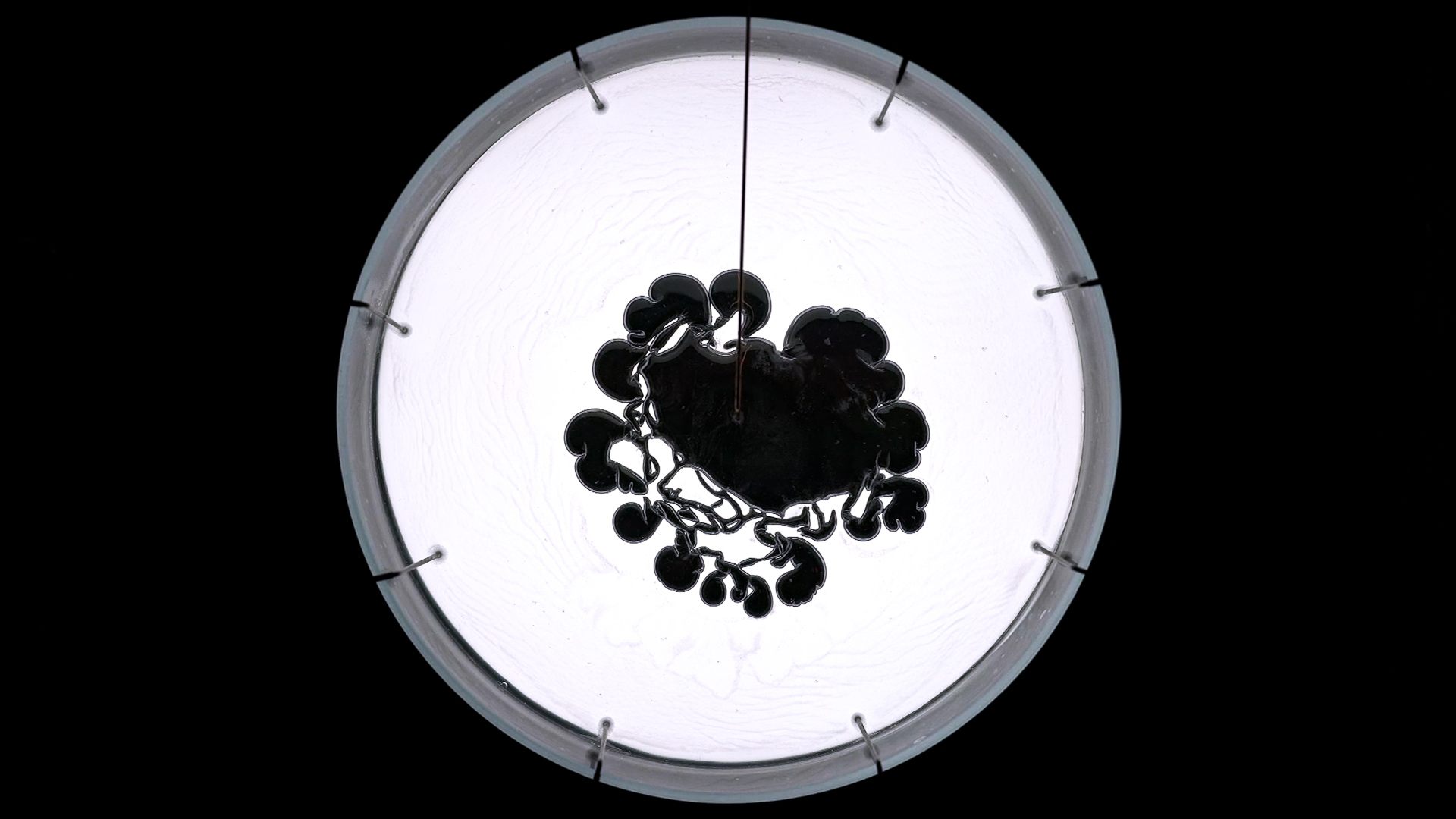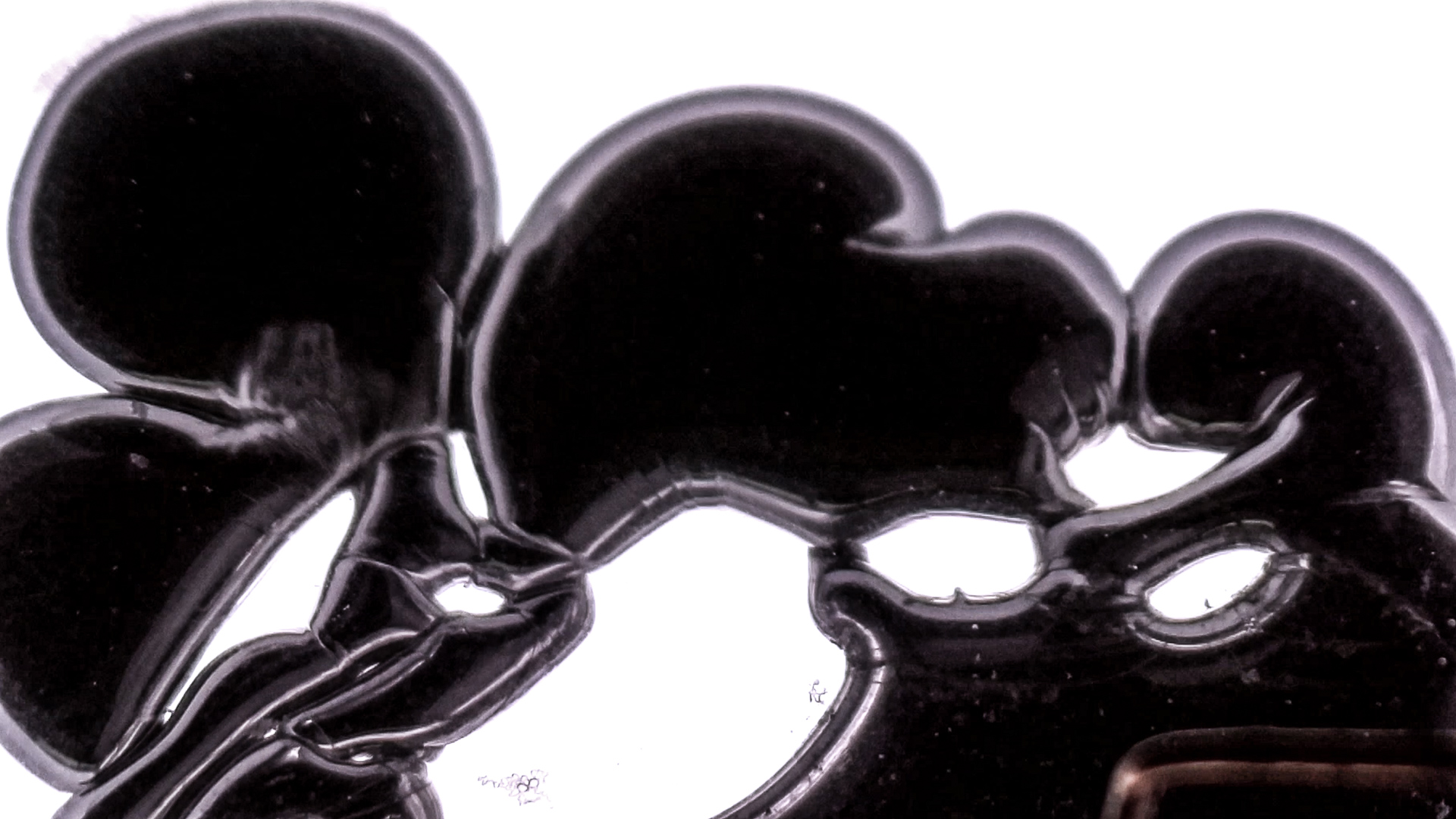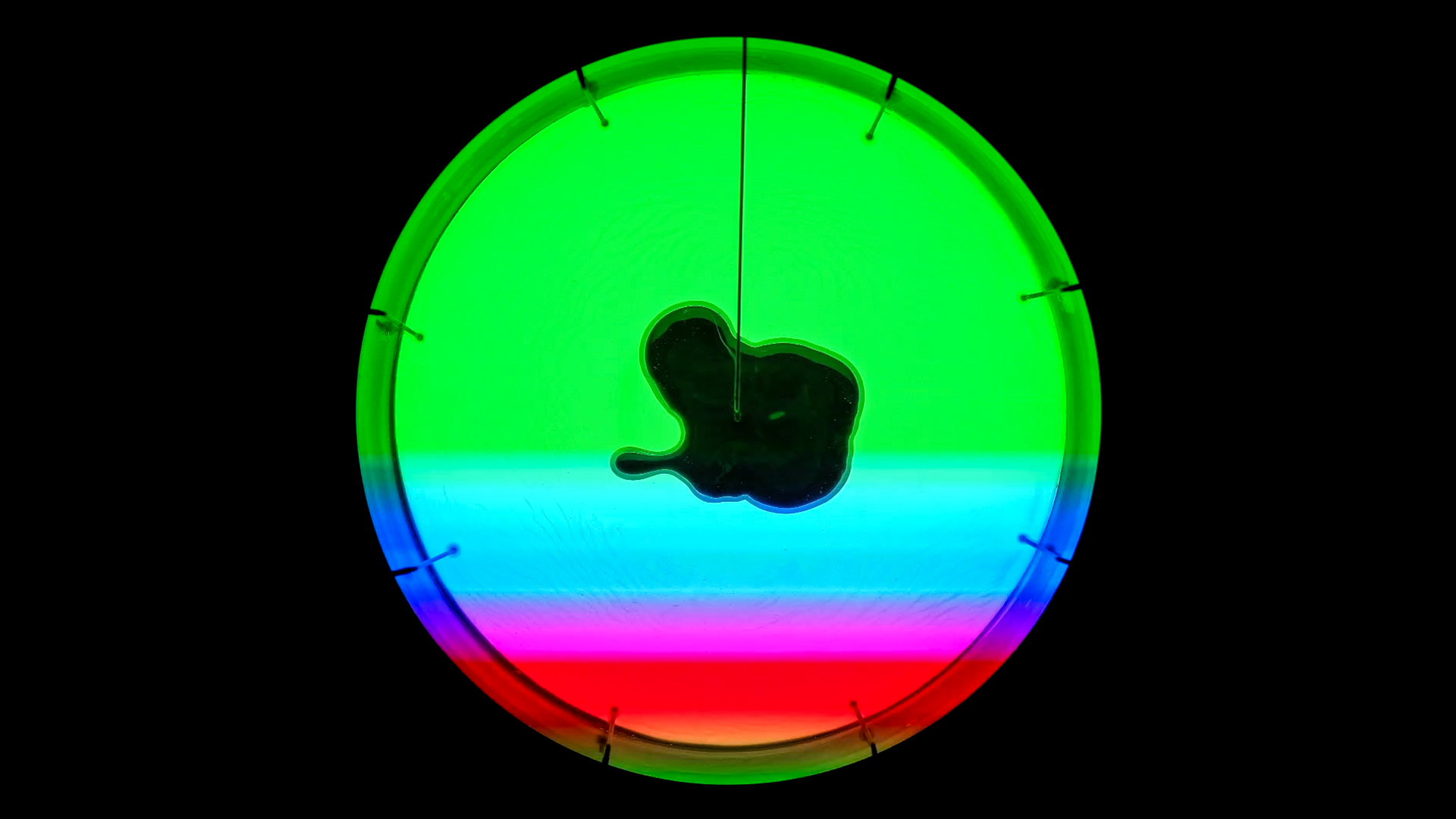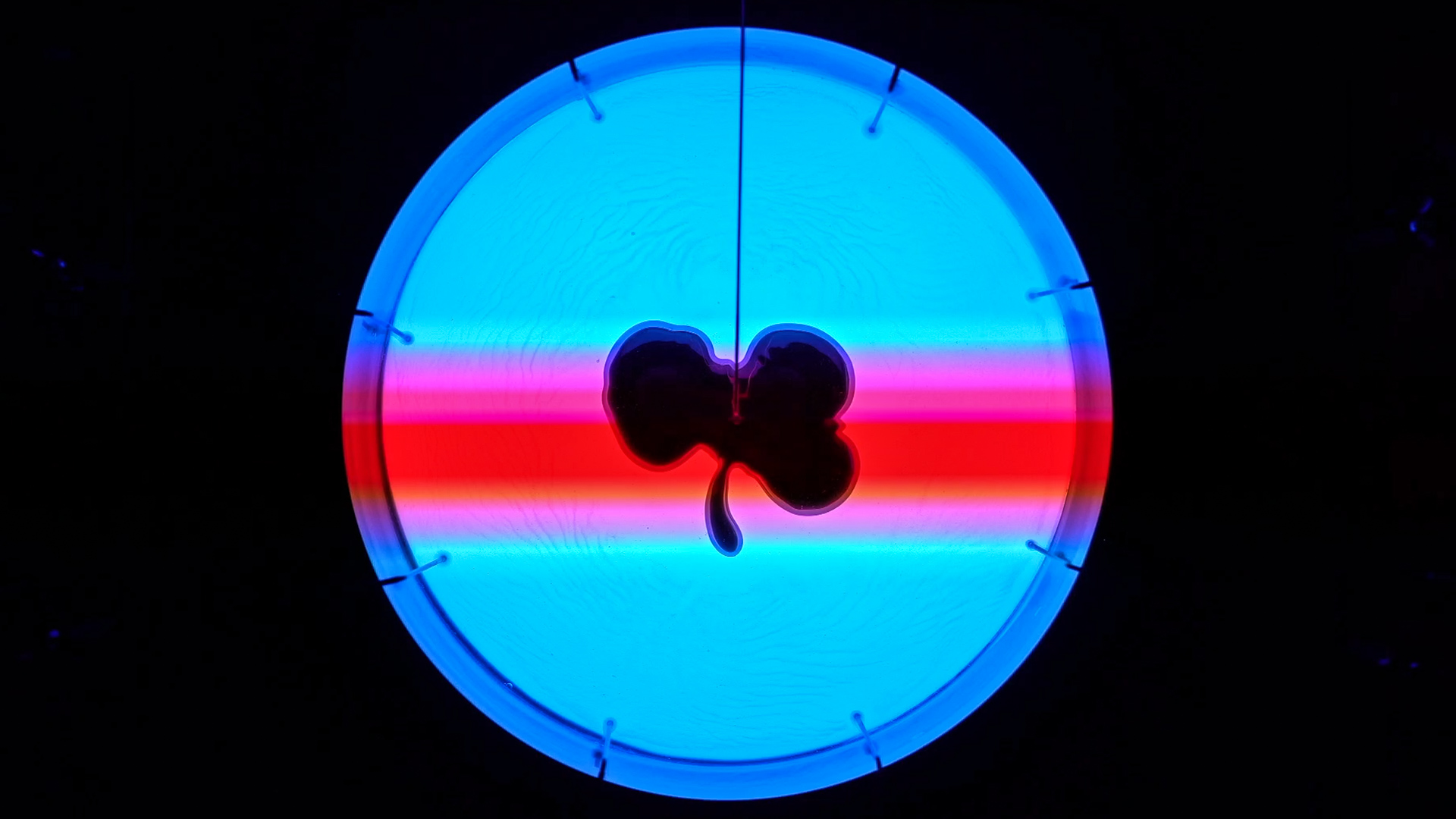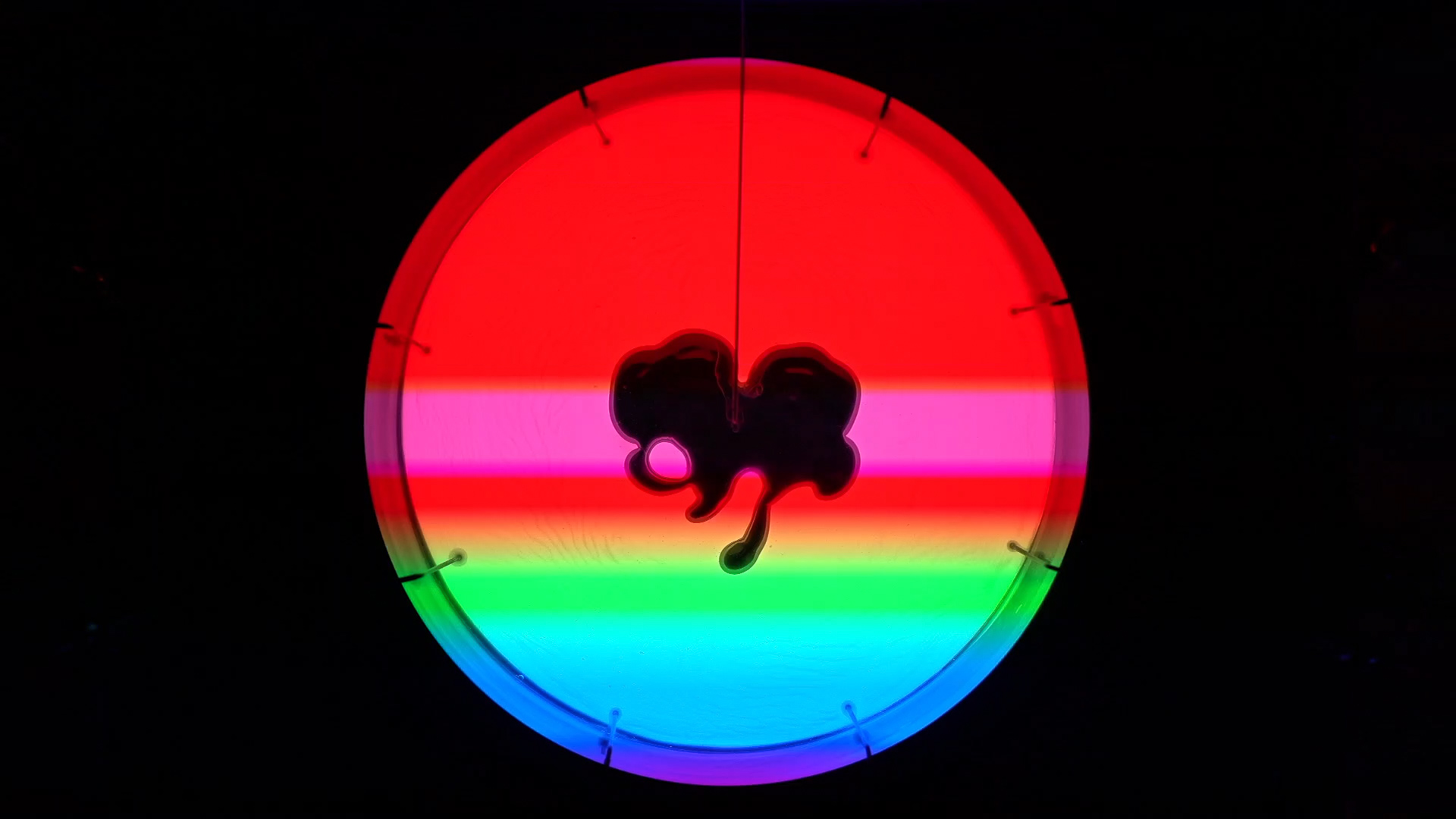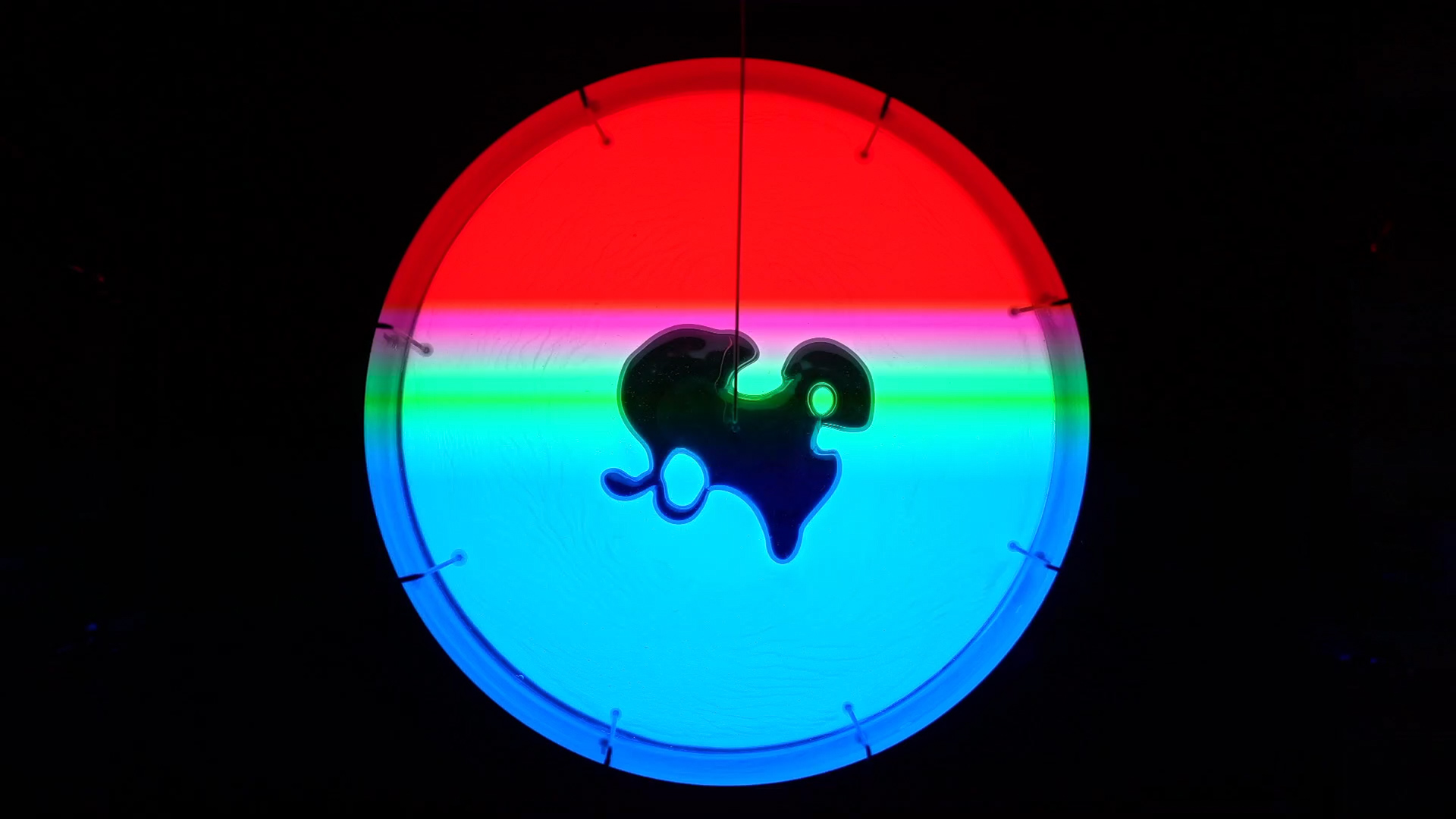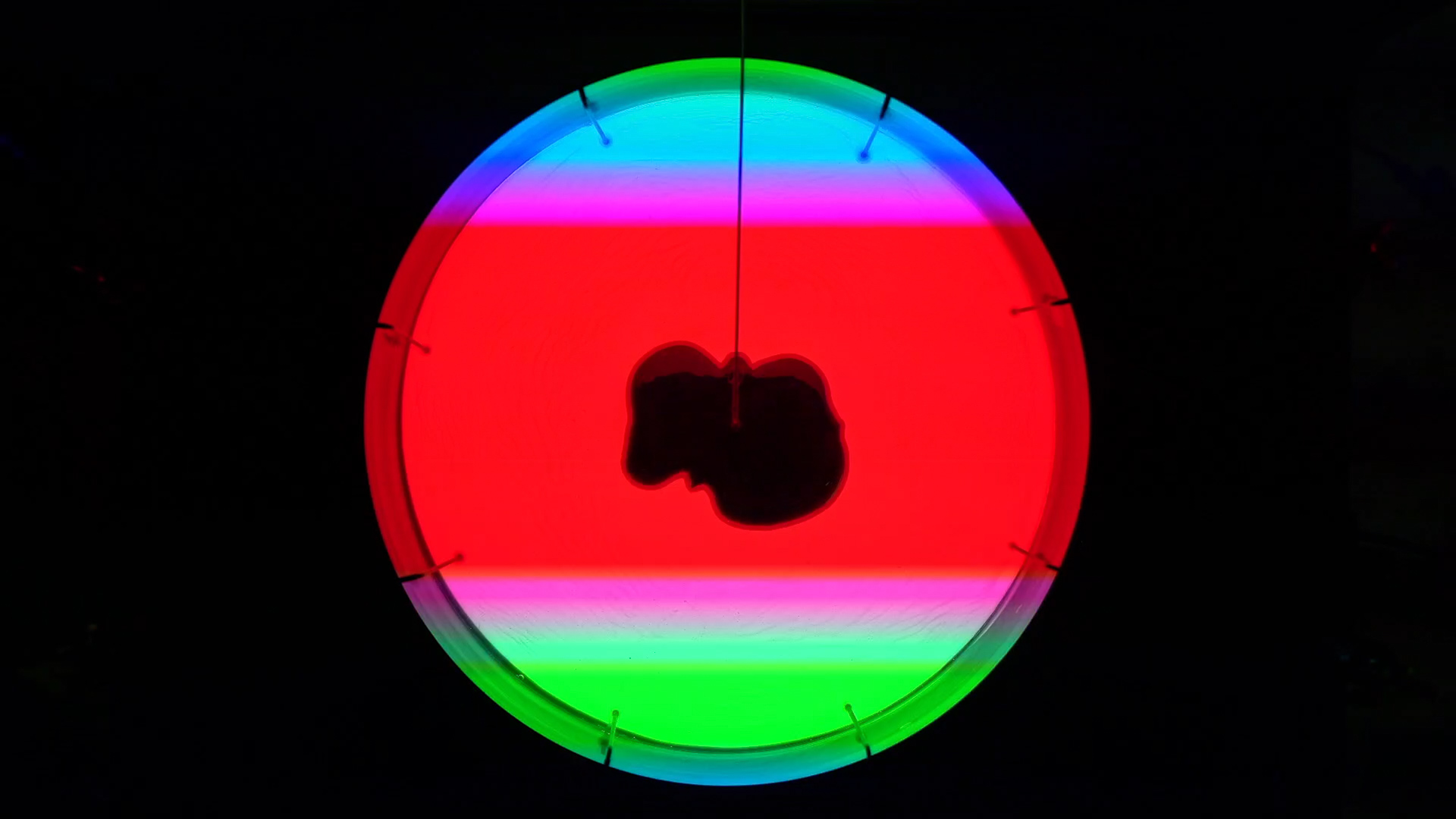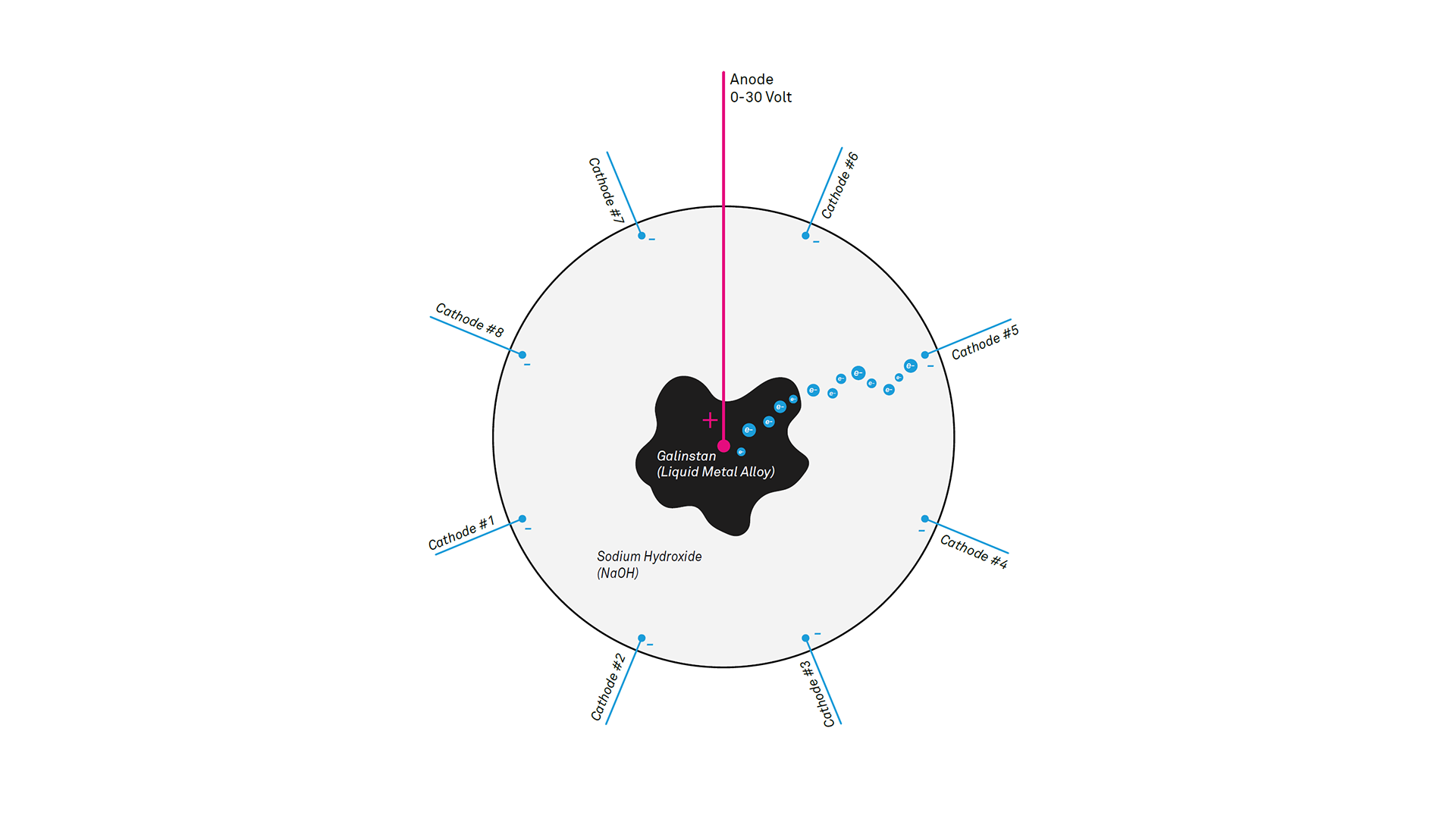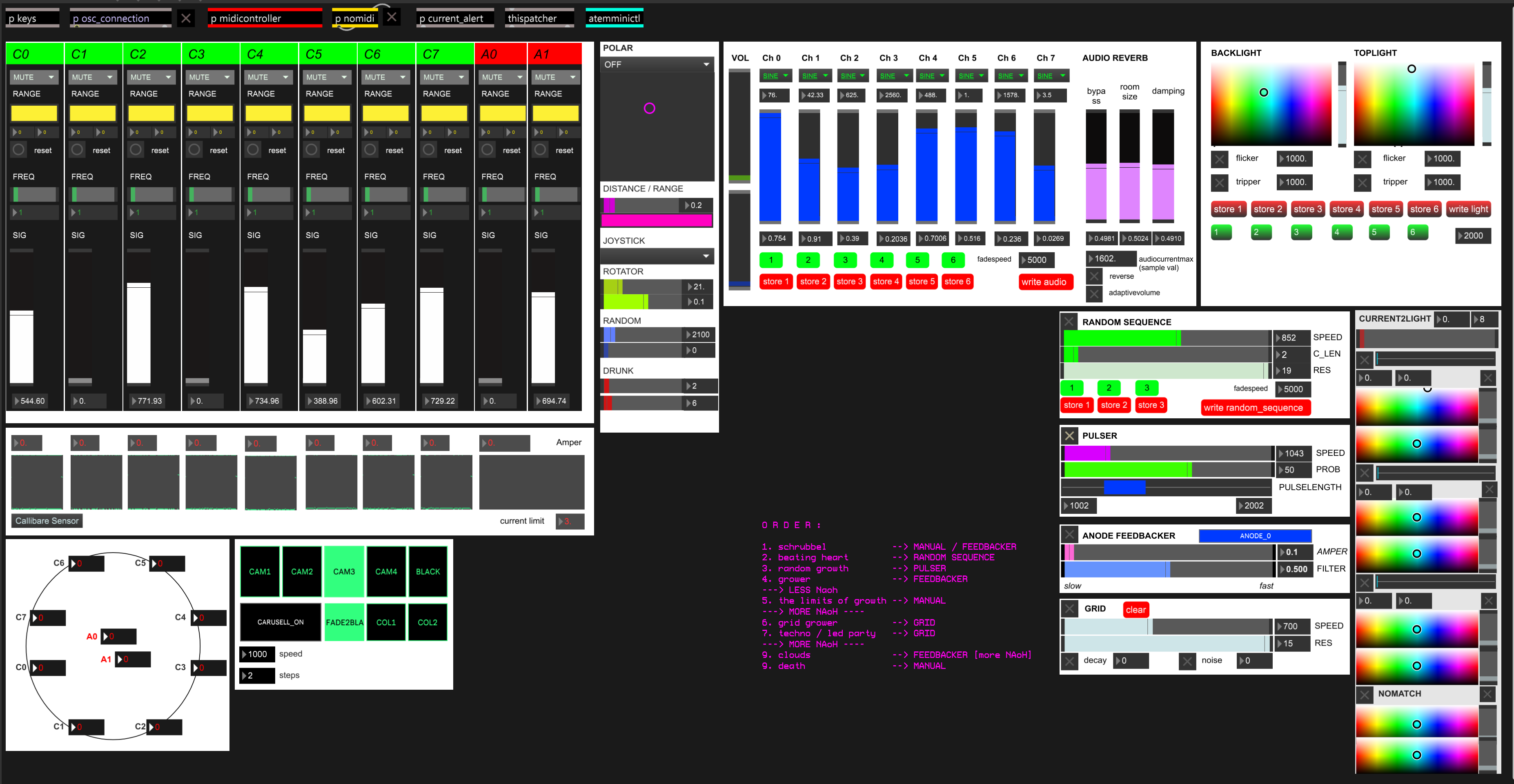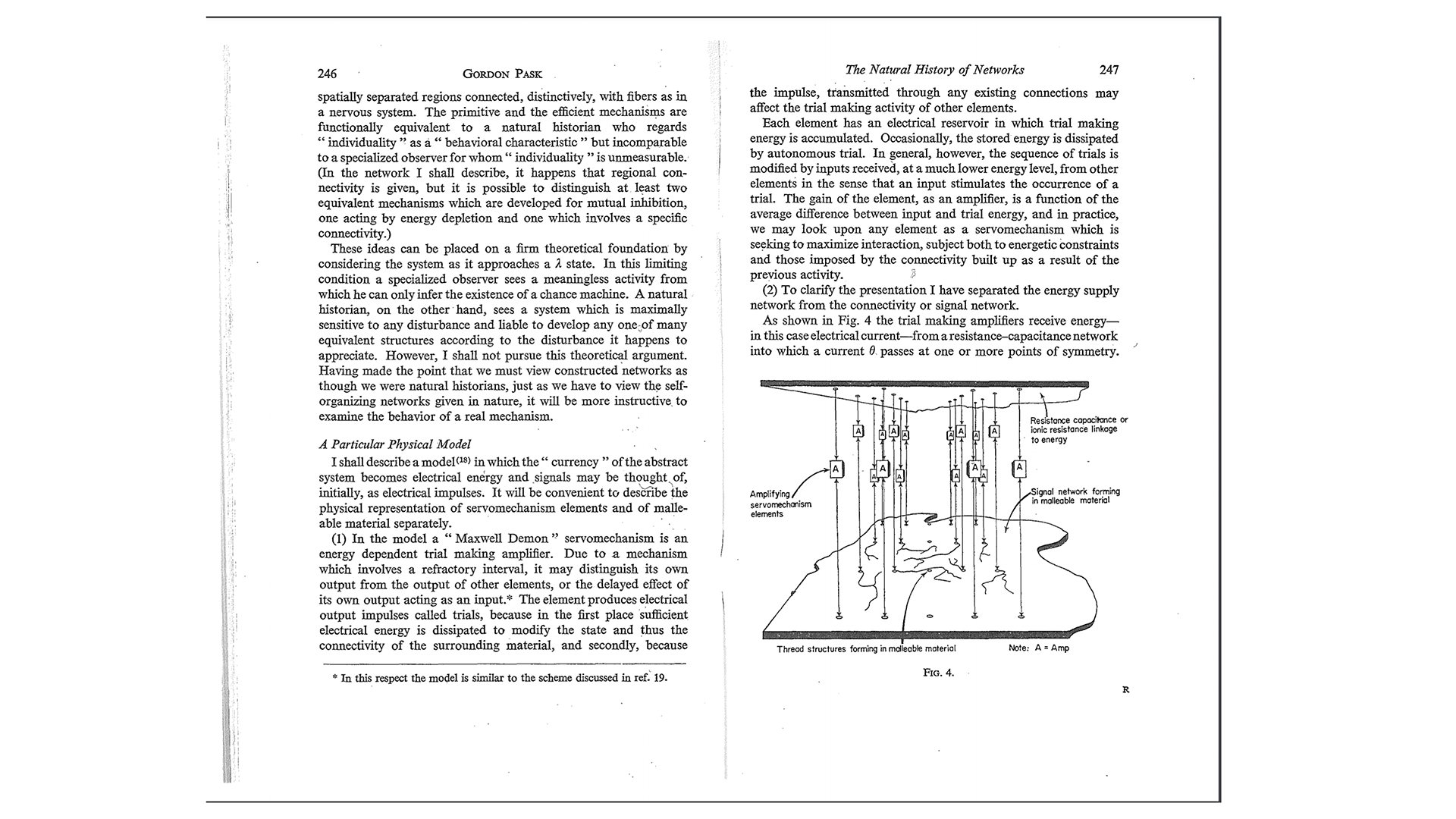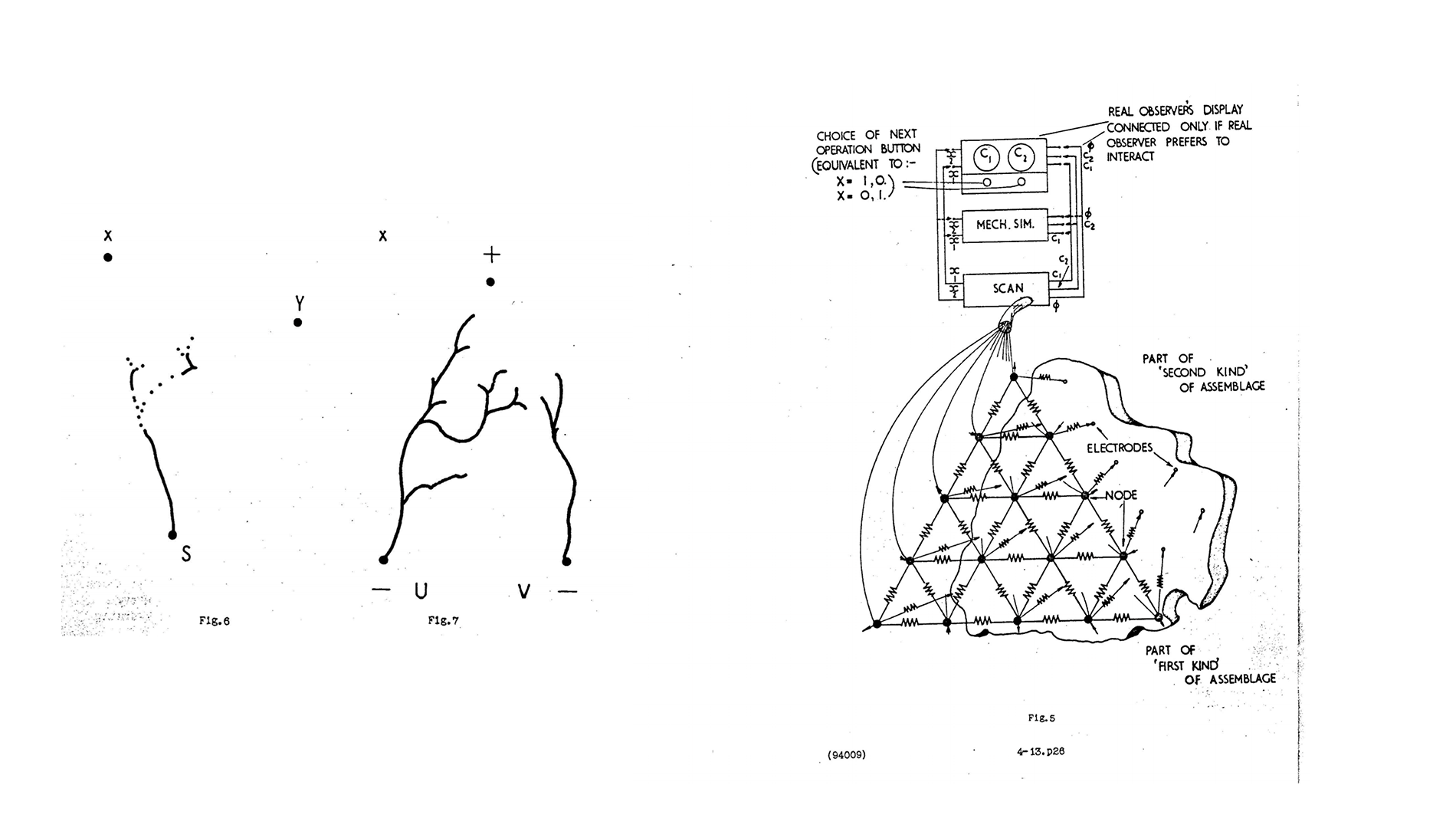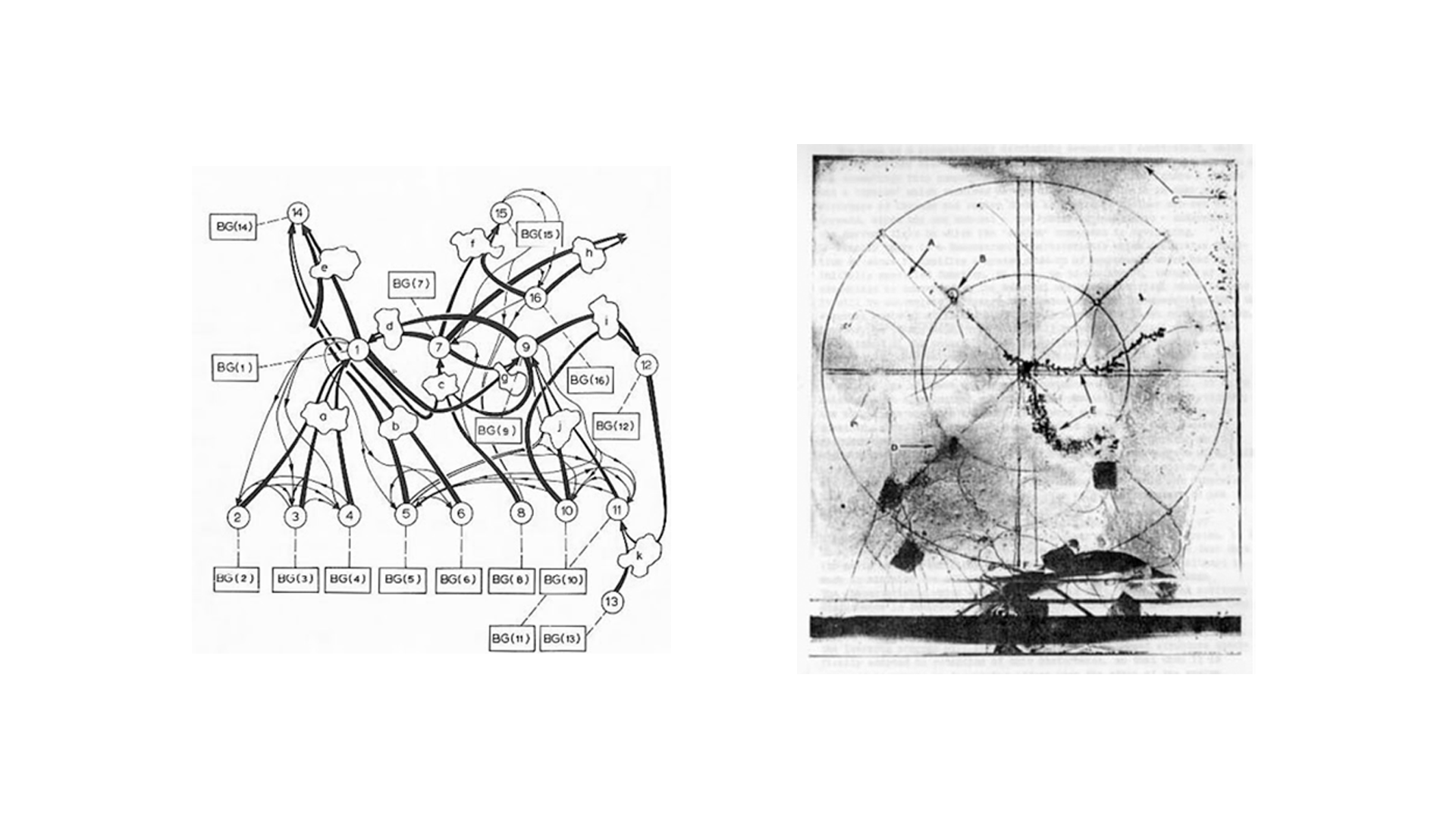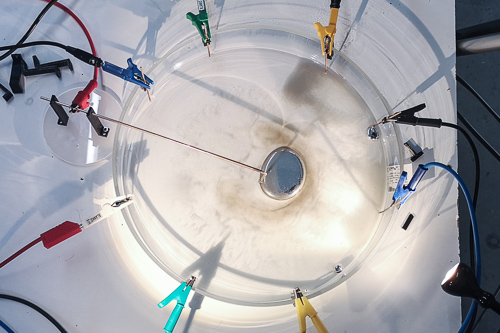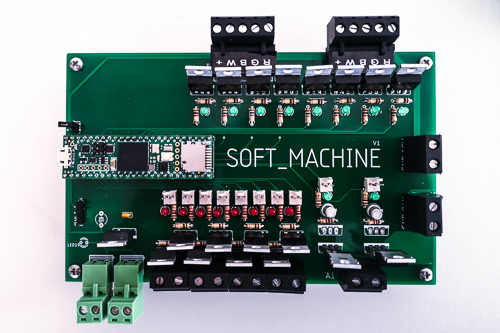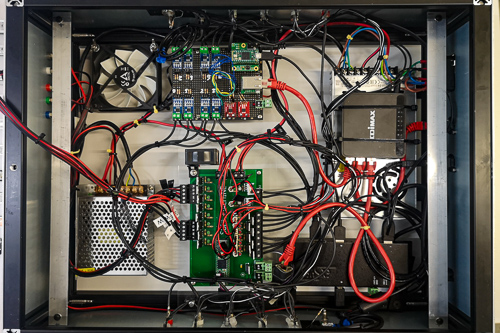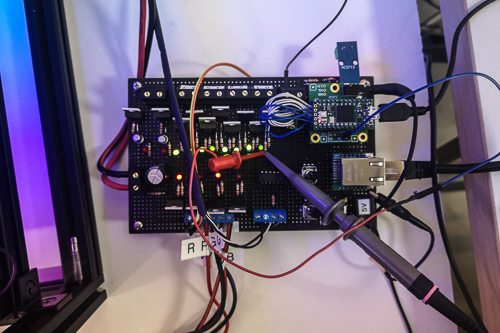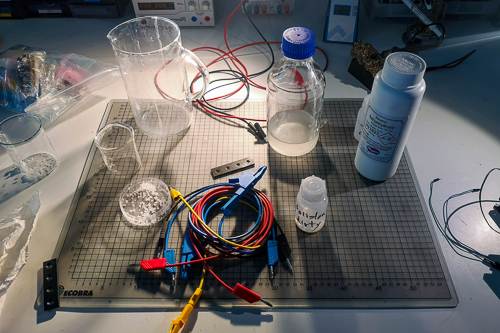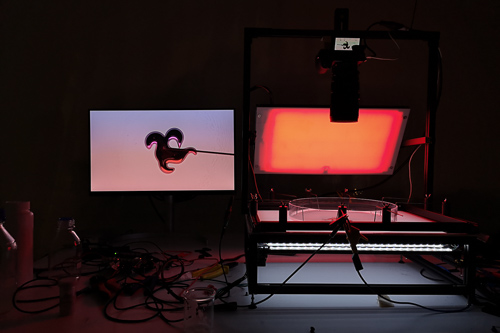Galinstan, sodium hydroxide, water, petri dish, custom electronics, microcontroller, aluminum framework, custom backlight, custom led lights, microcontroller, cables, cameras, projector
Credits:
Concept, development, production and performance: Ralf Baecker
Assistance and videography: Julian Hespenheide
Special thanks to STATE Studio Berlin for hosting and streaming.
Thanks to Ada Weller for the construction assistance
Awards:
Honorary Mention from Prix Ars Electronica 2023 in the Category Sound Art/Digital Music, Linz AT
Links/Resources:
+ Gordon Pask: The Natural History of Networks (1960)
reprinted in Self-Organizing Systems, London: Pergamon Press, 1960
+ Gordon Pask: Physical Analogues to the Growth of a Concept (1959)
reprinted in Mechanisation of Thought Processes, London: HMSO, 1959
+ Michelle Serres: The Birth of Physics, Rowman & Littlefield Publishers, 1980
+ Ilya Prigogine & Isabelle Stengerss: Order Out of Chaos- Man’s New Dialogue with Nature, London, Heinemann, 1984
+ Sen Chen, Lei Wang, Quinglei Zhang, Jing Liu: Liquid metal fractals induced by synergistic oxidation, Science Bulletin Volume 63, Issue 22, 30 November 2018
+ Faegheh Hoshyargar, Husnaa Khan, Kourosh Kalantar-zadeh and Anthony P. O'Mullane: Generation of catalytically active materials from a liquid metal precursor,Chemical Communications, 2015, 51
+ Jie Zhang, Lei Sheng and Jing Liua: Synthetically chemical-electrical mechanism for controlling large scale reversible deformation of liquid metal objects, Sci Rep. 2014; 4: 7116. Published online 2014 Nov 19.
+ Leily Majidi, Dmitry Gritsenko and Jie Xu: (Mechanical and Industrial Engineering, University of Illinois at Chicago, Chicago, IL, United States) Gallium-Based Room-Temperature Liquid Metals: Actuation and Manipulation of Droplets and Flows, Mechanical Engineering, 30 August 2017
Exhibitions/Performances:
A Natural History of Networks at Hidden Layers Conference
2024–06-13
Köln Internatinal School of Design, Cologne DE
A Natural History of Networks @ Expanded Program
2024-05-04
Kurzfilmtage Oberhausen, Oberhausen DE
A Natural History of Networks/Softmachine (solo)
2023-09-30 – 2023-09-30
Meinblau Projektraum, Berlin DE
Flatpack Festival
2023-05-19
Flatpack Festival, Birmingham UK
Maintenant Festival
2022-10-08
Les Champs Libres, Rennes FR
Vector Hack Festival
2022-10-01
Vector Hack Festival, Zagreb HR
Beijing Art and Technology Biennale
2022-09-23 – 2022-01-31
798 CUBE Art Center, Beijing CN
Anachronism
2022-04-05
Schwankhalle, Bremen DE
Electrons Libres
2022-02-25
Stereolux, Nantes FR
Symposium New Elements
2022-02-12
Laboratoria / New Tretjakow Galerie, Moscow RU
Gaia: Gene, algorithm, intelligent design, automata _A mirage self, The Other Realm
2022-02-12 – 2022-04-24
MOCA (Museum of Contemporary Art), Taipei TW
New Elements
2021-11-08 – 2022-02-27
Laboratoria / New Tretjakow Galerie, Moscow RU
Shiny Toys Festival
2021-11-27
Ringlokschuppen Ruhr, Mülheim an der Ruhr DE
Future Media Art Festival
2021-10-09 – 2021-11-23
Taiwan Contemporary Culture Lab (C-LAB), Taipei TW
A Natural History of Networks/Softmachine
2021-01-29
STATE Studio, Berlin DE


